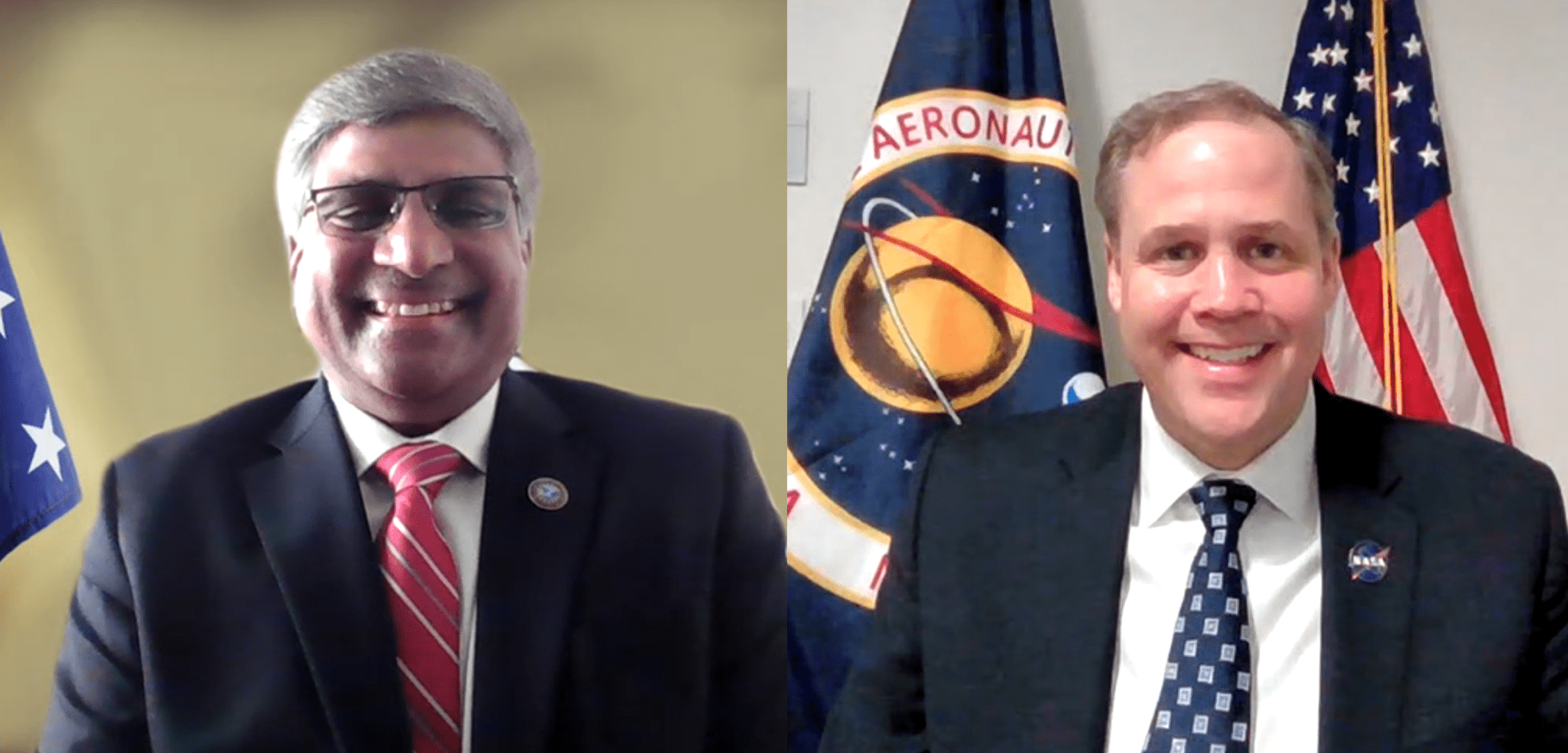
NASA and the U.S. National Science Foundation (NSF) have signed a memorandum of understanding affirming the agencies’ intent to continue their longstanding partnership in mutually beneficial research activities advancing space, Earth, biological, and physical sciences to further U.S. national space policy and promote the progress of science.
The agreement addresses a broad range of research and activities in many areas of science, engineering, and education central to the missions of both agencies.
“When you look at the vast array of disciplines that make up NASA’s mission, there isn’t a single one that isn’t somehow informed by our partnership with NSF,” said NASA Administrator Jim Bridenstine. “We look forward to continued collaboration on areas of research here on Earth and in space – including aboard the International Space Station – as well as inspiring the next generation of STEM professionals.”
Over the years, NASA and NSF have enjoyed a successful cooperative relationship that has supported further research and understanding related to a variety of disciplines, including research activities related to astrophysics, astrochemistry, planetary science, astrobiology, and heliophysics that aim to understand space weather, exoplanets, gravitational waves, and the origins of life.
For example, NASA and NSF have collaborated on field work and research activities in Antarctica and Greenland through NSF-managed stations and facilities, including research on Antarctica’s ice sheet, investigations using high-altitude scientific balloon platforms launched from McMurdo Station, the collection and profiling of ancient meteorites that have impacted the Antarctic ice sheet, and communications infrastructure support for Antarctic research stations.
The agencies also have engaged in field campaigns to address fundamental Earth system science, as well as Earth system modeling, remote sensing, and ocean and climate monitoring activities. Collaborations also have included activities related to the National Robotics, Cyber-Physical Systems and Digital Library initiatives, as well as supporting educational engagement activities, such as the Global Learning and Observations to Benefit the Environment program and the Center for Chemical Evolution.
NASA and NSF also have engaged in research aboard the International Space Station, addressing a wide variety of areas of inquiry, including biological and physical research in microgravity, plasma physics and joint solicitations in transport phenomena, tissue engineering, and mechanobiology. A number of these investigations have been conducted through the International Space Station U.S. National Laboratory (ISSNL), which the Center for the Advancement of Science in Space manages in cooperation with NASA.
“Increasingly, we see that shared resources and meaningful commitments to collaboration increase the likelihood of producing breakthrough discoveries. Research in Antarctica can inform what we know about space, for example, while experiments performed in microgravity can tell us more about life on Earth,” said NSF Director Sethuraman Panchanathan. “NASA has been a crucial partner for decades, and this interagency collaboration will ensure we can continue and expand our cooperative efforts, including building a strong and diverse scientific workforce.”
Through the agreement, NASA and NSF will continue working together to advance NASA- and NSF-sponsored science programs in astrophysics, planetary science, astrobiology, quantum technology, heliophysics, and Earth science, with special emphasis on those activities that continue to make use of NSF-managed facilities, including those in the Antarctic. The agencies also will continue the NASA-NSF partnership for exoplanet research; coordinate efforts to enable a full integration of Earth’s ecosystem and biodiversity observations from ground-based, aerial, and space-based sensing systems; continue interagency efforts to develop a space weather research-to-operations-to-research framework to establish principles for interagency collaboration on advancing and predicting Sun-Earth space weather; and continue collaboration between the NSF and the ISSNL; among other activities.
In addition, NASA and NSF are united in their efforts to broaden participation in science and engineering. Specifically, NASA’s Office of STEM Engagement is collaborating with NSF’s Inclusion across the Nation of Communities of Learners of Underrepresented Discoverers in Engineering and Science (INCLUDES) initiative to leverage talents of Minority Serving Institutions, as well as other students and researchers who are underrepresented in STEM. Through these and other efforts, NASA and NSF will engage the general public and inspire the next generation of professionals engaged in careers related to science, technology, engineering and math, as well as STEM educators.
For information about NASA and agency programs, visit:
-end-
Bettina Inclán / Matthew Rydin / Sean Potter
Headquarters, Washington
202-358-1600 / 202-603-7522 / 202-358-1536
bettina.inclan@nasa.gov / matthew.m.rydin@nasa.gov / sean.potter@nasa.gov

























